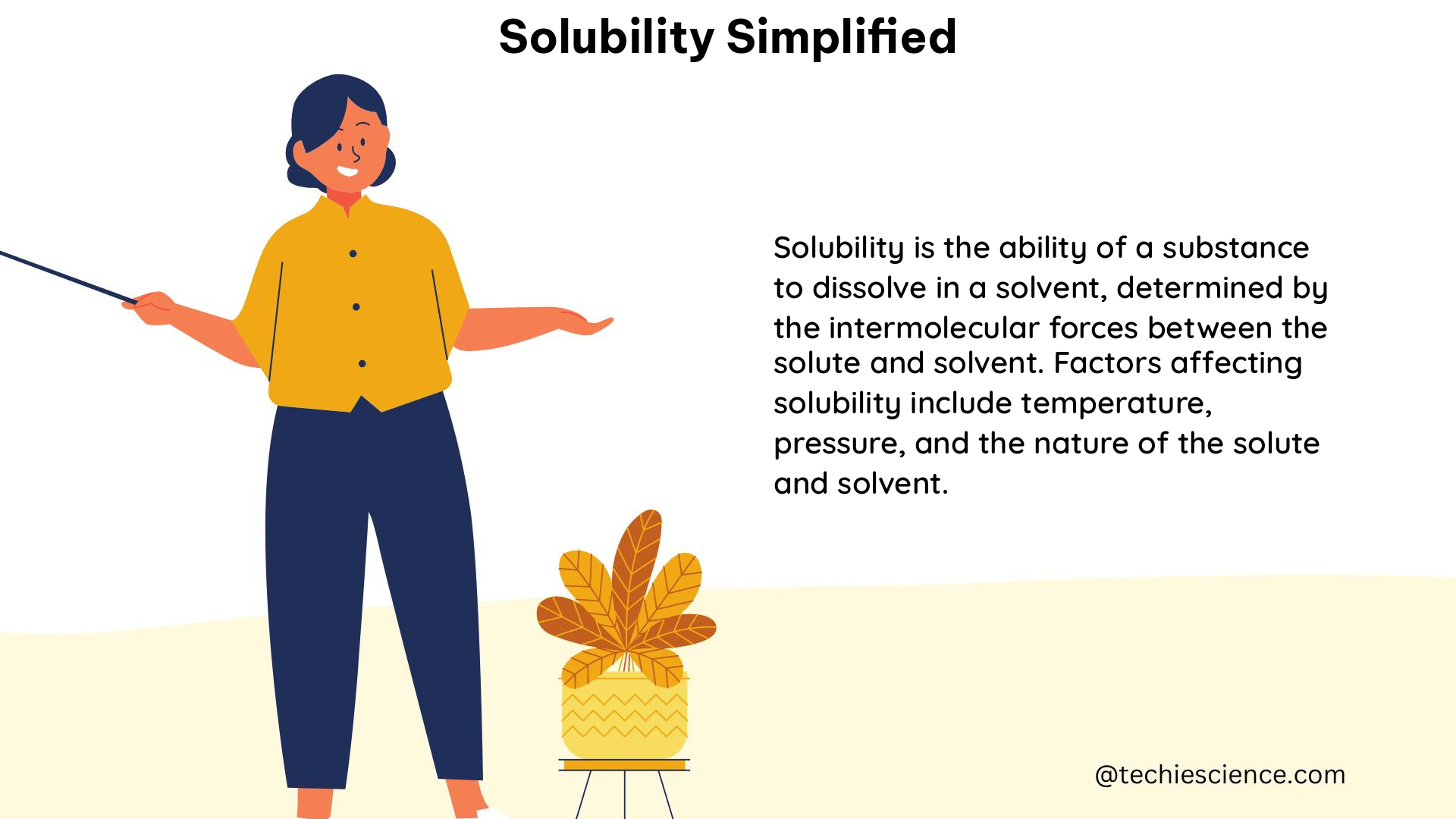Solubility is a fundamental concept in chemistry and physics, which refers to the ability of a substance, the solute, to form a solution with another substance, the solvent. This comprehensive guide will delve into the intricacies of solubility, providing physics students with a detailed understanding of this crucial topic.
Understanding Solubility Expressions
Solubility can be expressed in various ways, each with its own unit and application. Let’s explore the different solubility expressions:
- Grams of Solute per 100 Milliliters of Solvent (g/(100 mL)): This is a commonly used unit for expressing solubility, particularly in the preparation of stock solutions.
- Grams of Solute per Decilitre of Solvent (g/dL): This unit is often used in medical and biological applications.
- Grams of Solute per Liter of Solvent (g/L): This unit is widely used in various scientific and industrial applications.
- Grams of Solute per 100 Grams of Solvent (g/(100 g)): This unit is useful for expressing the solubility of a solute in a solid solvent, such as the solubility of a gas in a solid.
- Grams of Solute per Kilogram of Solvent (g/kg): This unit is commonly used in the food and beverage industry.
- Moles of Solute per Liter of Solution (mol/L): This unit, also known as molarity, is fundamental in chemistry and is used to express the concentration of a solution.
- Mole Fraction: This dimensionless unit represents the ratio of the moles of the solute to the total moles of the solution.
- Mass Fraction at Equilibrium: This dimensionless unit represents the ratio of the mass of the solute to the total mass of the solution.
Factors Affecting Solubility

The solubility of a substance in a liquid is determined by the Gibbs free energy change, which is the net energy change that results from the breakup of the ionic lattice of the solid (lattice energy) and the attachment of solvent molecules to the released ions (solvation or hydration energy). The solubility of a given salt is influenced by the following factors:
- Size, Charge, and Polarizability of Ions: The size, charge, and polarizability of the ions involved in the salt can significantly affect its solubility.
- Lattice Structure of the Solid: The lattice structure of the solid salt can also influence its solubility.
However, the large number of variables involved makes it challenging to predict the solubility of a given salt.
Trends in Solubility
Despite the complexity of solubility, there are some clear trends for how the solubilities of a series of salts of a given anion (such as hydroxides, sulfates, etc.) change with a periodic table group:
- Group I Elements: Salts containing Group I elements are generally soluble, except for salts containing the ammonium ion (NH4+), which are also soluble.
- Nitrate Ion (NO3-): Salts containing the nitrate ion are generally soluble.
- Halide Ions (Cl-, Br-, I-): Salts containing these halide ions are generally soluble, except for halide salts of Ag+, Pb2+, and (Hg2)2+, which are insoluble.
- Silver Salts: Most silver salts are insoluble.
Measuring Solubility
To measure the solubilities of common chemicals, such as table salt (NaCl), Epsom salts (MgSO4), and sugar (sucrose, C12H22O11), you can follow the experimental procedure used in the project “Saturated Solutions: Measuring Solubility” from Science Buddies. Here’s a step-by-step guide:
- Prepare the Experiment: Gather the necessary materials, including the chemicals, beakers, a balance, and a hot plate or water bath.
- Determine the Solubility: Add the solute to the solvent (water) in a beaker and stir the mixture until no more solute can be dissolved. This is the point of saturation.
- Measure the Solubility: Weigh the beaker with the saturated solution, then evaporate the solvent to determine the mass of the dissolved solute.
- Repeat the Experiment: Repeat the solubility experiment at least three times for each chemical to ensure the reproducibility of your results.
- Analyze the Data: Calculate the average solubility, the standard deviation of the solubility, and compare your results to published solubilities for the three chemicals.
By following this procedure, you can accurately measure the solubilities of common chemicals and gain a deeper understanding of this fundamental concept.
Conclusion
Solubility is a complex concept that depends on various factors, such as the Gibbs free energy change, the size, charge, and polarizability of the ions involved, and the lattice structure of the solid. Understanding the different ways to express solubility, the factors that affect it, and the trends in solubility is crucial for physics students. By mastering the concepts presented in this guide, you will be well-equipped to tackle solubility-related problems and experiments.
References
- How do I determine the solubility of a solute I have?
- Solubility Prediction
- The Nature of Solubility Equilibria
- Saturated Solutions: Measuring Solubility

The lambdageeks.com Core SME Team is a group of experienced subject matter experts from diverse scientific and technical fields including Physics, Chemistry, Technology,Electronics & Electrical Engineering, Automotive, Mechanical Engineering. Our team collaborates to create high-quality, well-researched articles on a wide range of science and technology topics for the lambdageeks.com website.
All Our Senior SME are having more than 7 Years of experience in the respective fields . They are either Working Industry Professionals or assocaited With different Universities. Refer Our Authors Page to get to know About our Core SMEs.